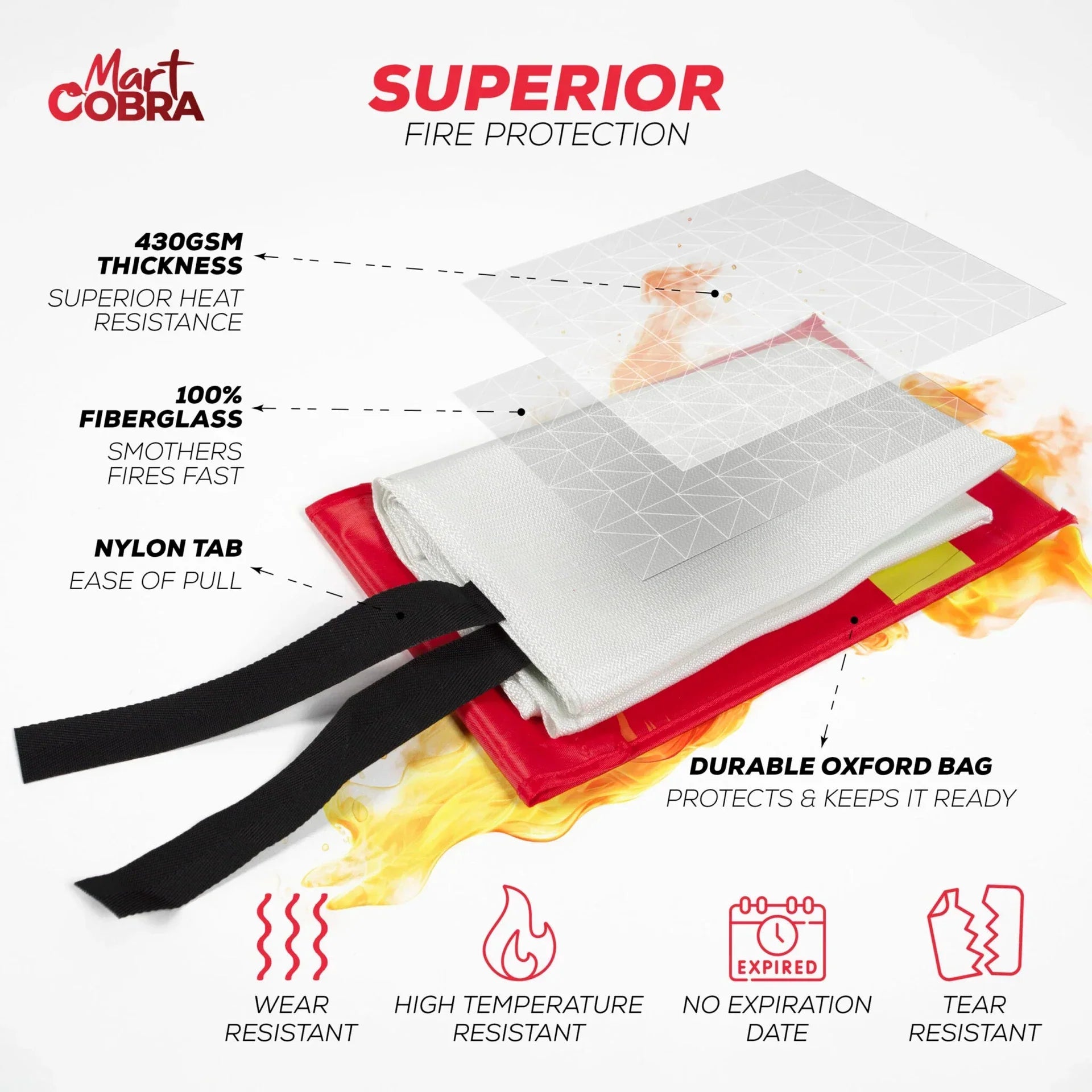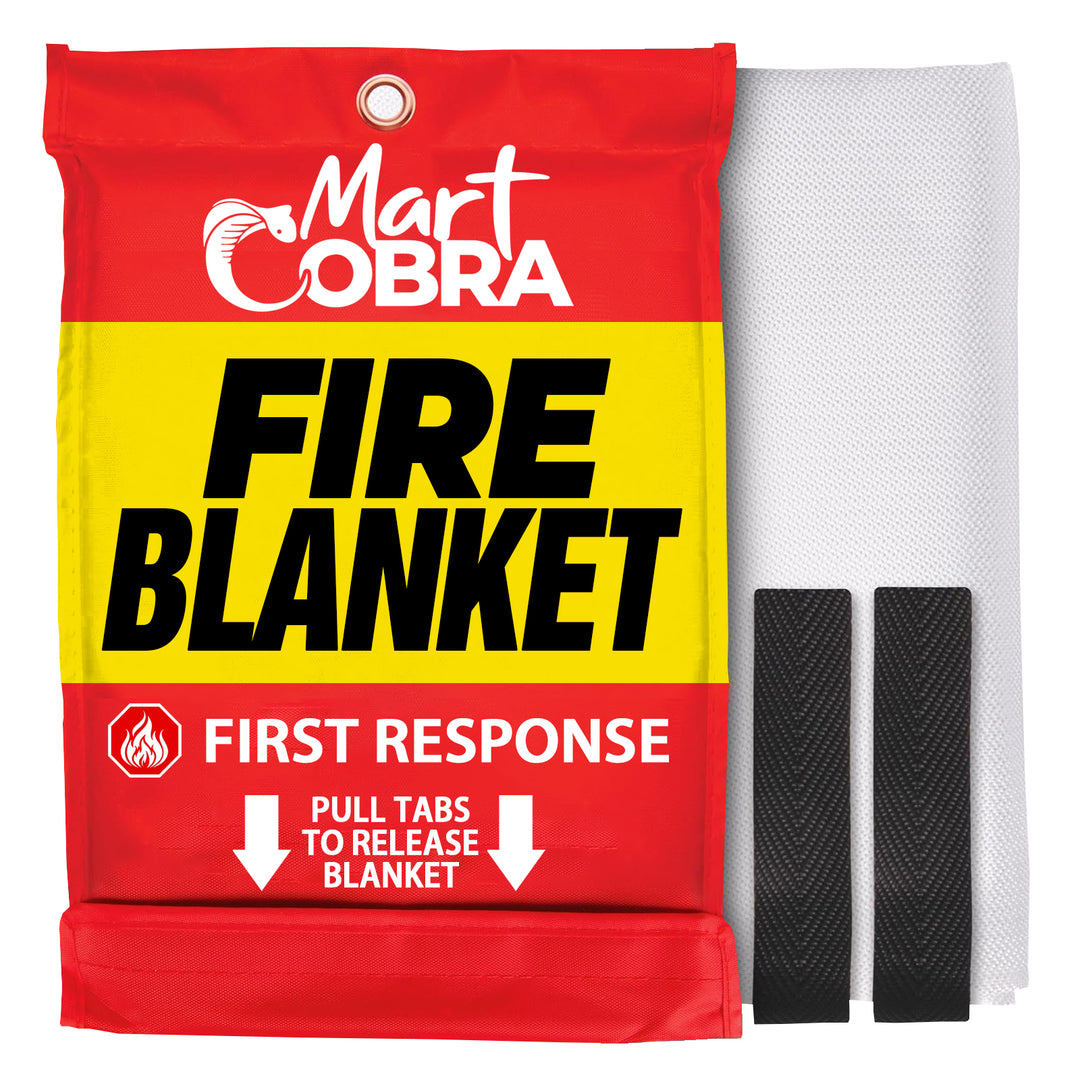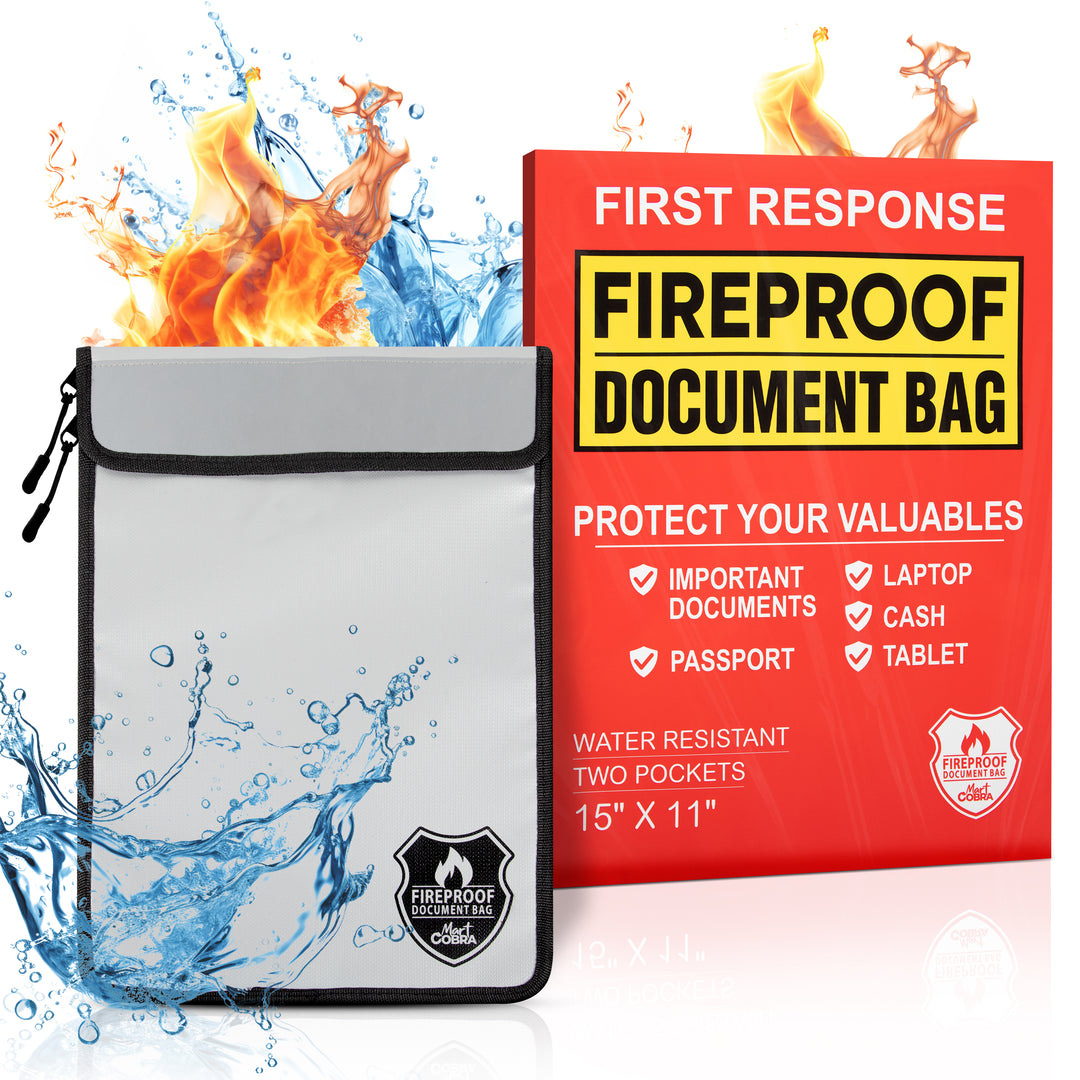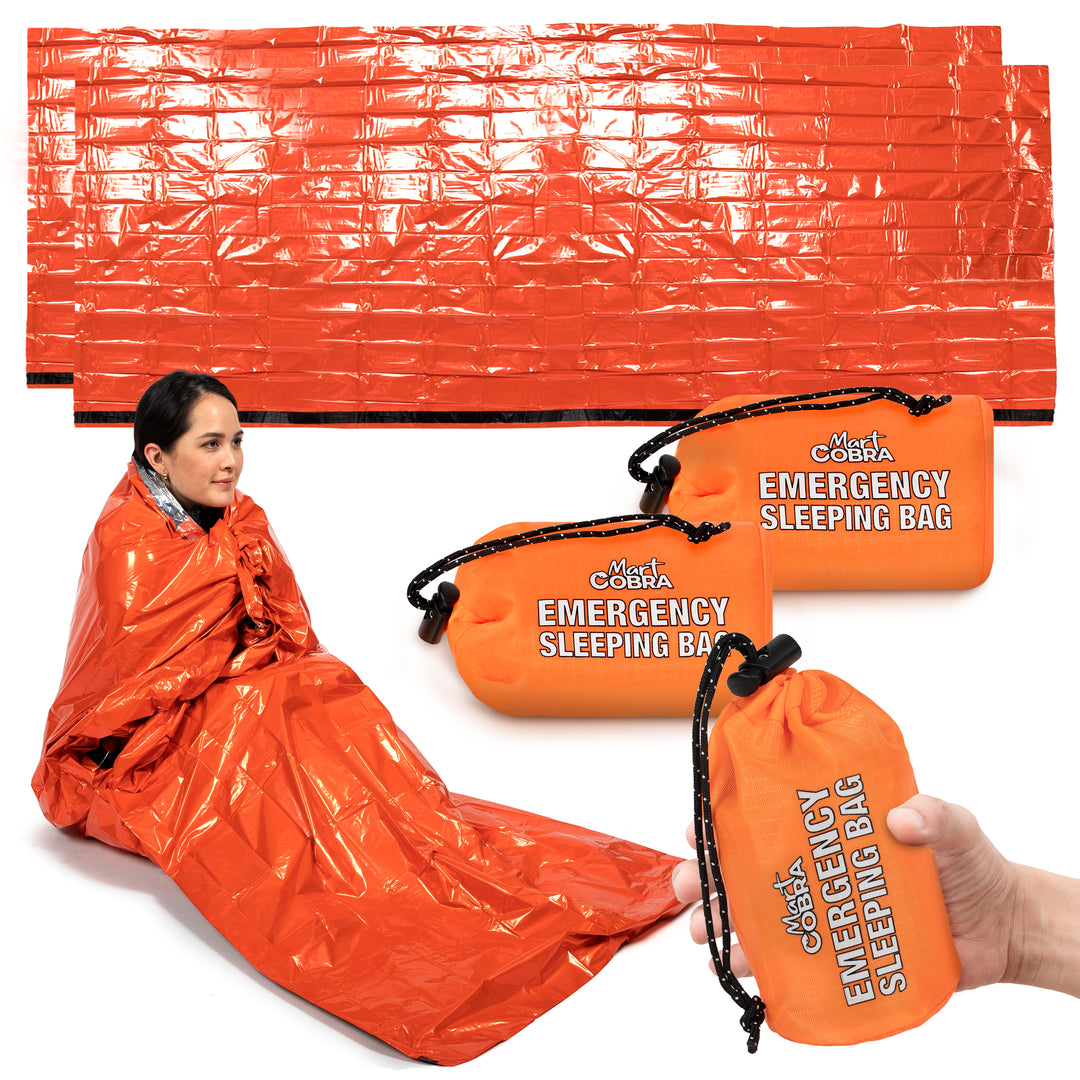In the world ofhome safety, fire blankets might not be the first thing that comes to mind. However, these unassuming tools can be literal lifesavers in an emergency.
But, have you ever stopped to wonder what makes a fire blanket so effective at extinguishing flames?
In this post, we'll unravel the mystery behind fire blanket materials and explore what sets them apart from other firefighting tools. By the end of this guide, homeowners, and safety enthusiasts will have a comprehensive understanding of fire blankets, how they work, and how to choose the right one for your needs. Let's get started!
What is Fire Blanket?
Afire blanket is a safety device designed to extinguish small fires. Typically made from fire-resistant materials, such as glass fiber or special fabric, fire blankets are folded and stored in a quick-access bag, making them easy to deploy in case of an emergency. When a fire occurs, the blanket can be placed over the flames to suffocate the fire by cutting off its oxygen supply.
Fire blankets are particularly effective forsmall kitchen fires, fires involving clothing, and ignitable liquids. They are an essential tool for most households and Claremont assisted living communities, providing an additional layer of safety beyond traditional fire extinguishers.
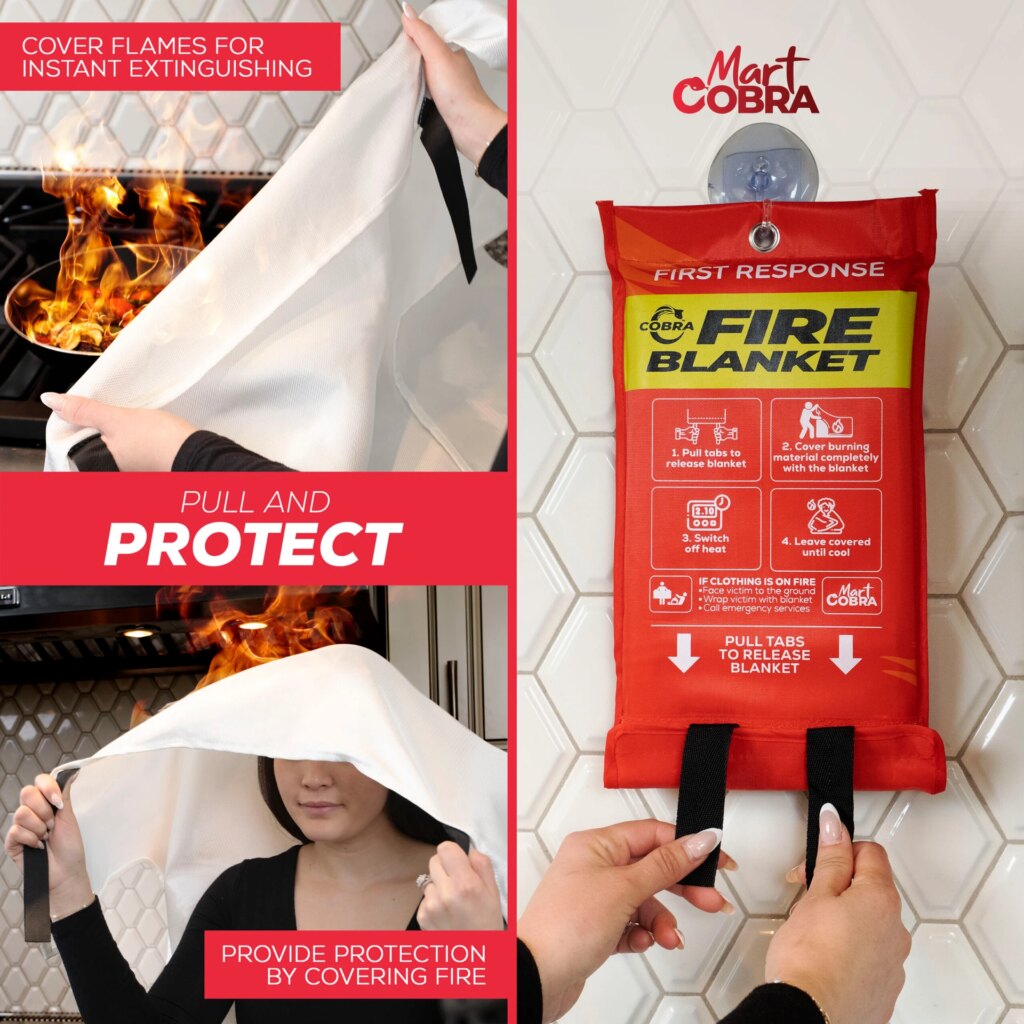
How to Use Fire Blanket?
Unlike fire extinguishers, which require an understanding ofdifferent fire classes and operations, fire blankets are straightforward and easy to use. In an emergency, all you have to do is:
- Quickly assess the situation and determine if it's safe for you to use a fire blanket.
- Remove the fire blanket from its packaging and hold it by the handles or corners.
- Approach the fire cautiously, keeping your hands and body protected behind the blanket.
- Gently lay the blanket over the source of the flames, making sure to cover it completely.
- Leave the fire blanket in place until the flames are completely extinguished.
- After use, turn off any heat sources and let the blanket cool before disposing of it.
It's important to note that fire blankets should only be used on small fires, such as in a kitchen or on clothing. For larger fires, it's best to call the fire department and evacuate the area.
Benefits of Keeping a Fire Blanket at Home
For homeowners and safety enthusiasts, having a fire blanket on hand is an affordable way to enhance your home safety toolkit. As mentioned, they are especially useful in kitchen fires where oil or grease might be involved, as they can quickly contain the flames without spreading dangerous chemicals.
Here are some additional benefits of having a fire blanket at home:
- They do not require maintenance or regular checks like fire extinguishers do.
- They are lightweight and easy to store, making them suitable for small spaces.
- They can be used on both people and objects, making them versatile in emergency situations.
- Unlike some fire extinguishers that release harmful chemicals when used, fire blankets do not emit any toxic substances.
Materials Used in Fire Blankets
The effectiveness of a fire blanket largely depends on the materials it's made from. Generally, fire blankets are constructed from one of two primary materials—fiberglass and wool. Each material has unique properties that contribute to its ability to smother fires effectively.
Fiberglass
Fiberglass is a popular choice for fire blankets due to its excellent heat resistance. It's made from fine strands of glass woven into a high-strength fabric. This material can withstand temperatures up to 1,000 degrees Fahrenheit, making it ideal for most domestic fires.
Fiberglass blankets are lightweight and flexible, allowing users to quickly and easily cover a fire. However, they can be slightly irritating to the skin if handled without proper protection, so wearing gloves is recommended when deploying them.
Wool
Wool fire blankets are another option, often treated with a special flame-retardant solution to enhance their fire-smothering capabilities. Wool is naturally insulating and can resist heat well, though not quite to the extent of fiberglass.
While wool blankets may not withstand as high temperatures as fiberglass, they are softer to the touch and less likely to cause skin irritation. They're also more environmentally friendly, as wool is a renewable resource.
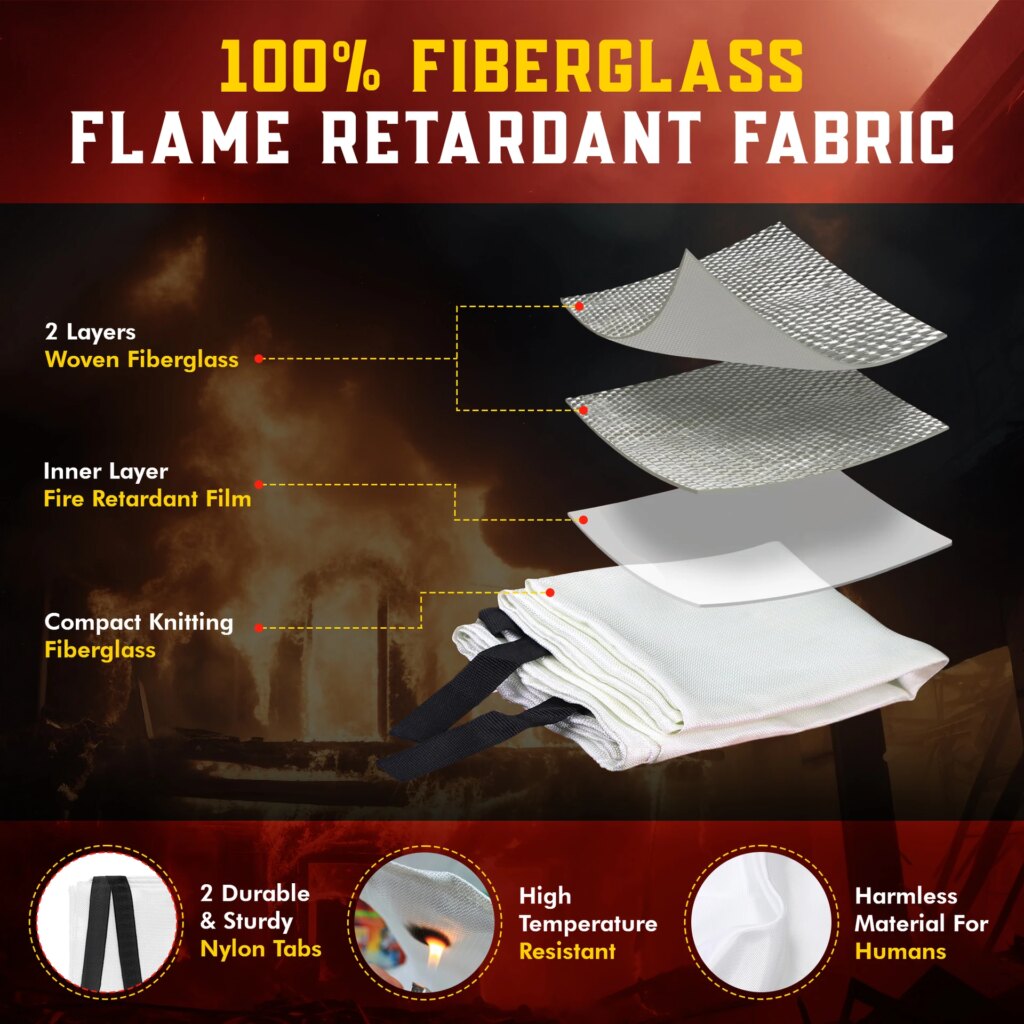
Materials Behind Effective Fire Blankets
To appreciate why fire blankets work so effectively, it's crucial to understand the properties of the materials used in their construction.
Here are some key features that make these materials ideal for extinguishing fires:
Heat Resistance
Both fiberglass and wool are known for their heat resistance. This is the most critical property for a fire blanket, as it needs to withstand intense heat without catching fire itself. The excellent thermal insulation offered by these materials ensures the blanket remains intact while suffocating the fire.
Non-Combustibility
A fire blanket must be non-combustible to prevent the risk of flare-ups or spreading flames, meaning it does not catch fire when exposed to flames or high heat. Fiberglass is an inherently non-combustible material, while wool can be treated with flame-retardant chemicals to achieve this property.
Oxygen Depletion and Insulation
The structure and composition of fiberglass and wool allow them to effectively smother fires. As they cover the flames, they cut off the oxygen supply necessary for combustion. These materials also provide insulation properties, preventing heat from escaping and containing the fire in one area.
Flexibility and Ease of Use
Fire blankets must be easy to deploy quickly in an emergency scenario. The flexibility of fiberglass allows it to be folded compactly, ready to be thrown over a fire at a moment's notice. Similarly, wool's softness provides a gentle but effective barrier against flames.
Insulating Properties
Fiberglass and wool are both insulating materials, meaning they can absorb heat without catching fire. This feature is essential for preventing fires from spreading to other objects and causing significant damage.
Durability
Durability is another important feature of fire blanket materials. Fiberglass, with its robust composition, offers exceptional tear and puncture resistance, ensuring that it won't rip while being used. Wool's natural resilience means it can absorb and distribute heat evenly without degrading quickly.
Comparing Fire Blanket Materials
Choosing the right fire blanket material depends on your specific needs and preferences. Here's a comparison to help you determine which type is best suited for you:
Fiberglass Advantages
- Higher Heat Resistance: Withstand higher temperatures, suitable for a wider range of fires.
- Lightweight: Easier to handle and deploy in emergencies.
- Cost-Effective: Often more affordable due to widespread production.
Wool Advantages
- Skin-Friendly: Softer to the touch, reducing irritation risk.
- Eco-Friendly: Made from renewable resources with minimal environmental impact.
- Good Insulation: Naturally insulates against heat, protecting users while in use.
Ultimately, the choice between fiberglass and wool comes down to personal preference. Some might prioritize the higher temperature resistance of fiberglass, while others may prefer the eco-friendly nature of wool.

Tips for Choosing and Maintaining Fire Blankets at Home
Selecting and maintaining your fire blanket is crucial to ensure it's ready when you need it most. Here are some practical tips to consider:
Choosing a Fire Blanket
- Size Matters: Select a blanket large enough to cover the potential fire source adequately. Consider having multiple blankets of various sizes for different situations.
- Material Preferences: Decide between fiberglass and wool based on your needs. If higher heat resistance is paramount, fiberglass is the better choice, but for a more eco-friendly option, consider wool.
- Certification: Look for fire blankets that are certified to comply with safety standards, ensuring they meet specific safety and performance criteria.
- Packaging: Ensure the blanket comes in a quick-release pouch for easy access during emergencies. The packaging should be visibly labeled so it’s identifiable at a glance.
Maintaining Your Fire Blanket
- Regular Inspections: Check your fire blanket periodically for signs of wear and tear, such as fraying edges or damage to the packaging. Replace the blanket if any defects are found.
- Proper Storage: Store your fire blanket in a cool, dry place, away from direct sunlight or damp areas, to prolong its life and effectiveness.
- Cleaning Guidelines: Follow the manufacturer's instructions for cleaning, if applicable. Most fire blankets may not be washable, and improper cleaning could diminish their effectiveness.
- Replace After Use: Always replace the fire blanket after it has been deployed, as its integrity may be compromised after use.
By following these tips, you can ensure that your fire blanket remains an effective and reliable tool for enhancing the safety of your home and loved ones.
Mart Cobra Fire Blankets: A Trusted Choice
When it comes to fire blankets,Mart Cobra has you covered. Our top-of-the-line fire blankets are made from flame-resistant fiberglass and meet the strictest safety standards. Here are a few reasons why our fire blankets are atrusted choice:
- Easy to Use: In the midst of chaos, our fire blankets are designed for simplicity, requiring just a few quick steps to cut off oxygen flow and extinguish flames. This empowers you with the peace of mind that you and your family are prepared with our emergency fire blanket.
- No Mess: Unlike traditional fire extinguishers, our Cobra fire blanket leaves no mess behind, making it the ideal solution for home fire safety. Our heat-resistant fabric is free from pollutants and irritants commonly found in extinguishers.
- Premium Certified Quality: Mart Cobra emergency fire blankets are crafted from high-grade 430+ GSM 100% fiberglass fabric. Our flame-retardant blankets can withstand temperatures up to 1076°F and areCE andSGS certified for safety and reliability.
- Multi-purpose Protection: Whether you're in the kitchen, by the grill, on a boat, or in your car, our fireproof blankets adapt to various situations, protecting loved ones and valuable possessions from the unexpected. They can also be used as survival blankets or small fire extinguishers in the kitchen.
- Trusted Performance: Designed in Texas and backed by years of reliable performance, our home fire safety kits are respected by fire safety experts. We guarantee quality and efficiency, ensuring that your home and loved ones are safeguarded by the best.
Conclusion
Understanding the materials and properties of fire blankets is crucial for anyone interested in home safety. By choosing the right material for your needs, maintaining it properly, and learning how to use it effectively, you can enhance youremergency preparedness and protect your home.
Remember, a fire blanket isn't just a tool; it's a safeguard that offers peace of mind. For those passionate aboutfire safety, investing in aquality fire blanket is a small step that can make a substantial difference.
For further resources on fire safety or detailed guidance on choosing the best fire blanket for your home, don't hesitate toreach out to our team of experts. Your safety is our priority.
